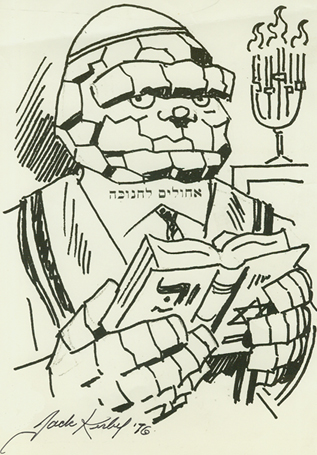Jack Kirby’s massive contributions to comics are common knowledge. His influential pulp-epic motifs. The revolutionary dynamism of his art. But here I’d like to talk about a more specific set of “King” Kirby’s innovations—his use of “minority” protagonists. Whether stressing the multi-ethnic makeup of America or revising racist preconceptions of Africa, Kirby’s work challenged comics’ unremarked upon WASPiness and white supremacy in quiet and not-so-quiet ways. Here are a few key figures he used to do so.
*Note: Most of these characters are of course co-creations with Stan Lee, and I don’t mean to downplay Lee’s own role as writer. I have, however, tried to focus here on characters in whose development Kirby seems to have had a dominant role.
The Thing/Benjamin Grimm
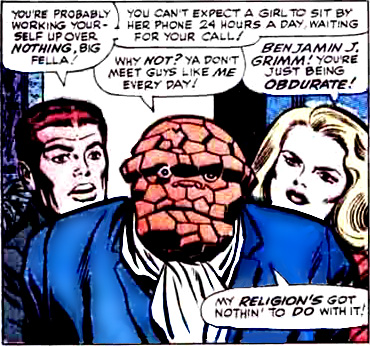

The Howling Commandos
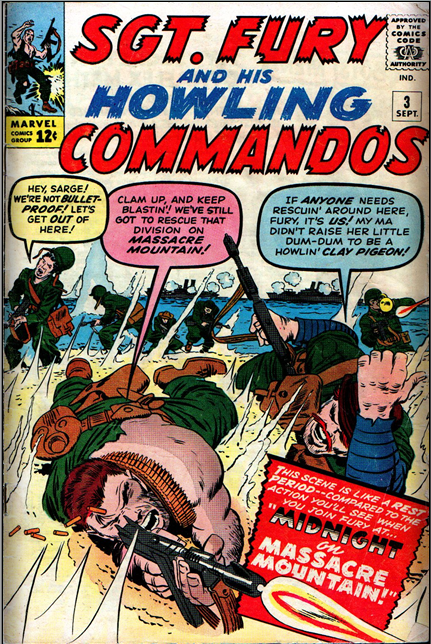
Nick Fury’s crack team of anti-Nazis are practically poster boys for mid-20th-century ethnic diversity: Italian-American Dino Manelli and Jewish-American “Izzy” Cohen fight anachronistically* alongside African-American Gabriel Jones against the racist Reich. “Seven against the Nazis!” promised the cover of Sgt. Fury and His Howling Commandos #1, and the seven were a pointedly diverse slice of the U.S. military.
*The US armed services weren’t, in fact, desegregated until 1948. The fact that Kirby and Lee decided to nonetheless have a black man as part of the Commandos is revisionism—but it seems to me that this revisionism was progressive in 1963, whereas it served more as a means of erasure in this summer’s Captain America film.
The Black Panther/T’Challa
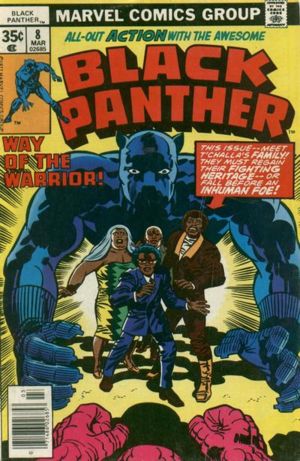 When he gets the writers he deserves (see Christopher Priest’s late 90s run), T’Challa, king of the African nation of Wakanda, living embodiment of the panther spirit, is one of the most interesting superheroes in mainstream comics. He was, for all intents and purposes, the first real black superhero. But Kirby and Lee’s innovation with this character was not simply in introducing him, but in defining his powers. While the Black Panther has the physical prowess of his namesake, he is also a sophisticated genius who rules a technological wonderland in the heart of Africa. Such an imagining of “the dark continent” featuring an intelligent, independent ruler was, quite simply, unprecedented in popular culture. And, on a related, note, I love the way that Kirby’s pseudo-African prints and shields look uncannily similar to his iconic circuitry:
When he gets the writers he deserves (see Christopher Priest’s late 90s run), T’Challa, king of the African nation of Wakanda, living embodiment of the panther spirit, is one of the most interesting superheroes in mainstream comics. He was, for all intents and purposes, the first real black superhero. But Kirby and Lee’s innovation with this character was not simply in introducing him, but in defining his powers. While the Black Panther has the physical prowess of his namesake, he is also a sophisticated genius who rules a technological wonderland in the heart of Africa. Such an imagining of “the dark continent” featuring an intelligent, independent ruler was, quite simply, unprecedented in popular culture. And, on a related, note, I love the way that Kirby’s pseudo-African prints and shields look uncannily similar to his iconic circuitry:
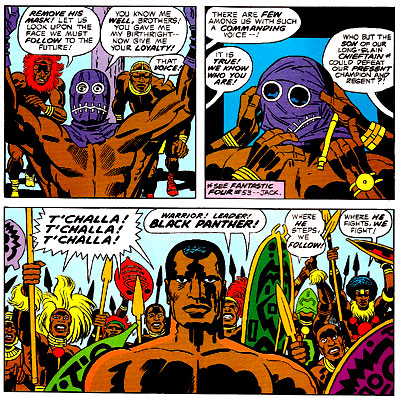
The Black Racer/Willie Walker
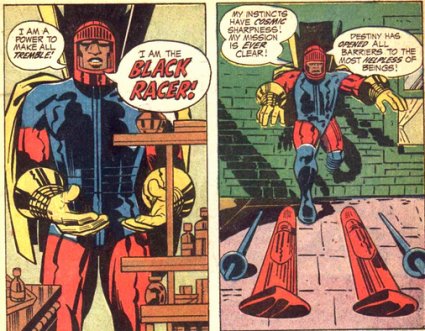
The most important artifact of Kirby’s dalliances with DC is probably his New Gods mythos. And over this mythos looms the implacable, terrifying, slightly goofy figure of the Black Racer. The racer is the avatar of death, housed in the body of wounded African American veteran Willie Walker. Yes, name-wise he’s yet another “Black [insert noun here]” hero. And yes, as with Kirby’s Silver Surfer, his mode of travel is a smidge ridiculous. But the idea that a cosmically profound, godlike avatar of inevitable life-passing would choose a black Vietnam Vet for incarnation was a radical one in 1971, and Kirby’s execution of it is just beautifully weird.
#
So who did I miss, folks? Anyone out there want to make the case for, say, poor, neglected Wyatt Wingfoot…?
Saladin Ahmed was born in Detroit. He has been a finalist for the Nebula and Campbell awards, and his short fiction has appeared in numerous magazines and podcasts. He has taught creative writing at various universities and offers online mentorhsip and critique services for writers. His debut fantasy novel Throne of the Crescent Moon is forthcoming from DAW Books.










